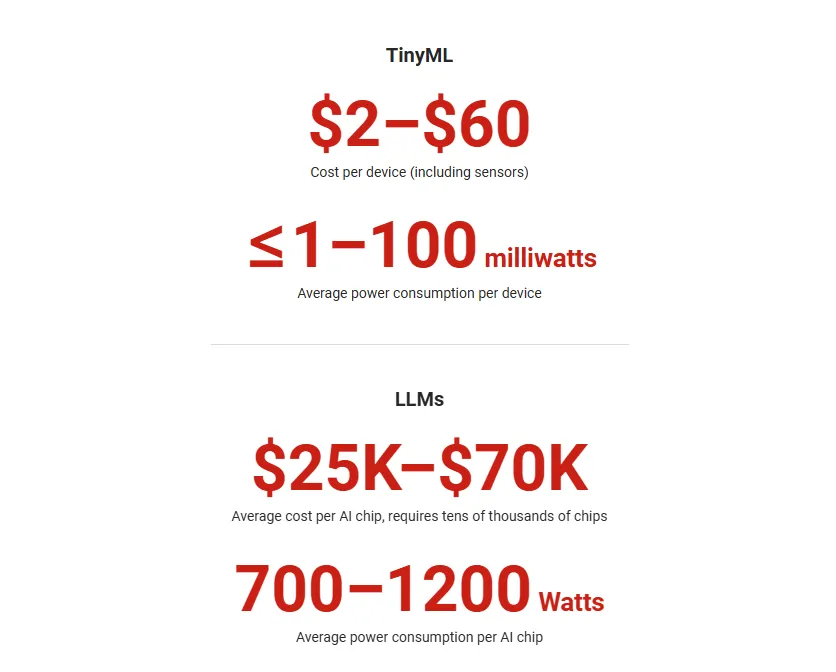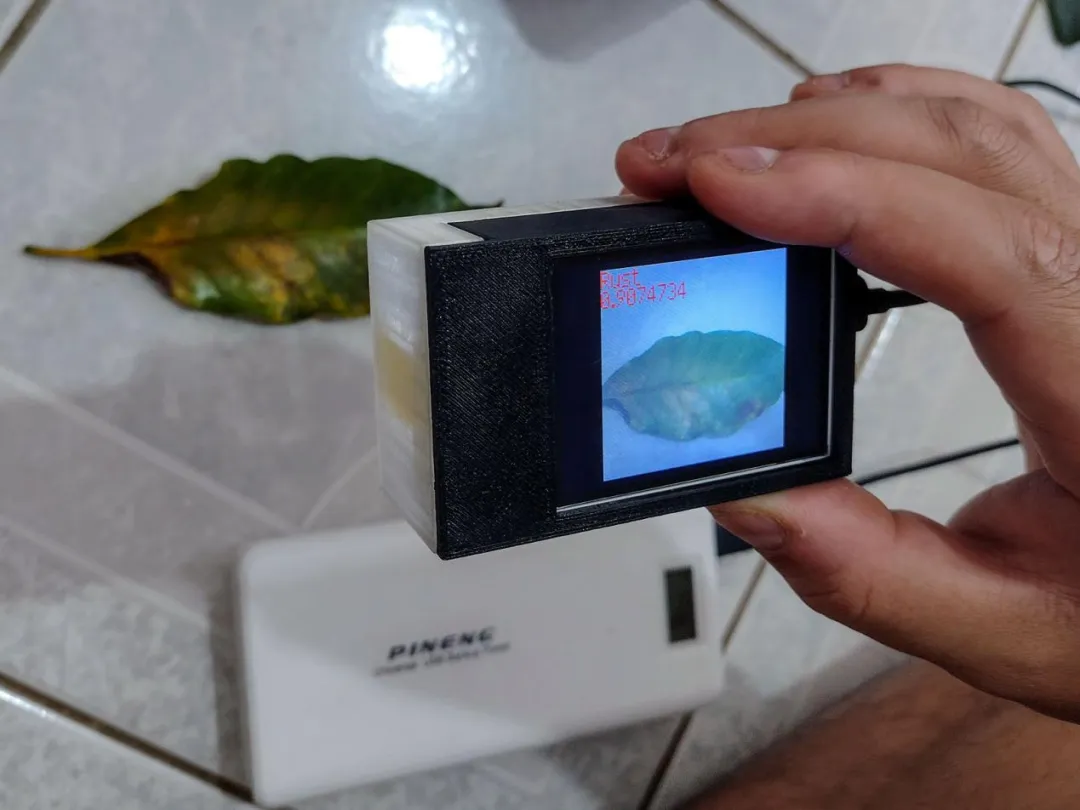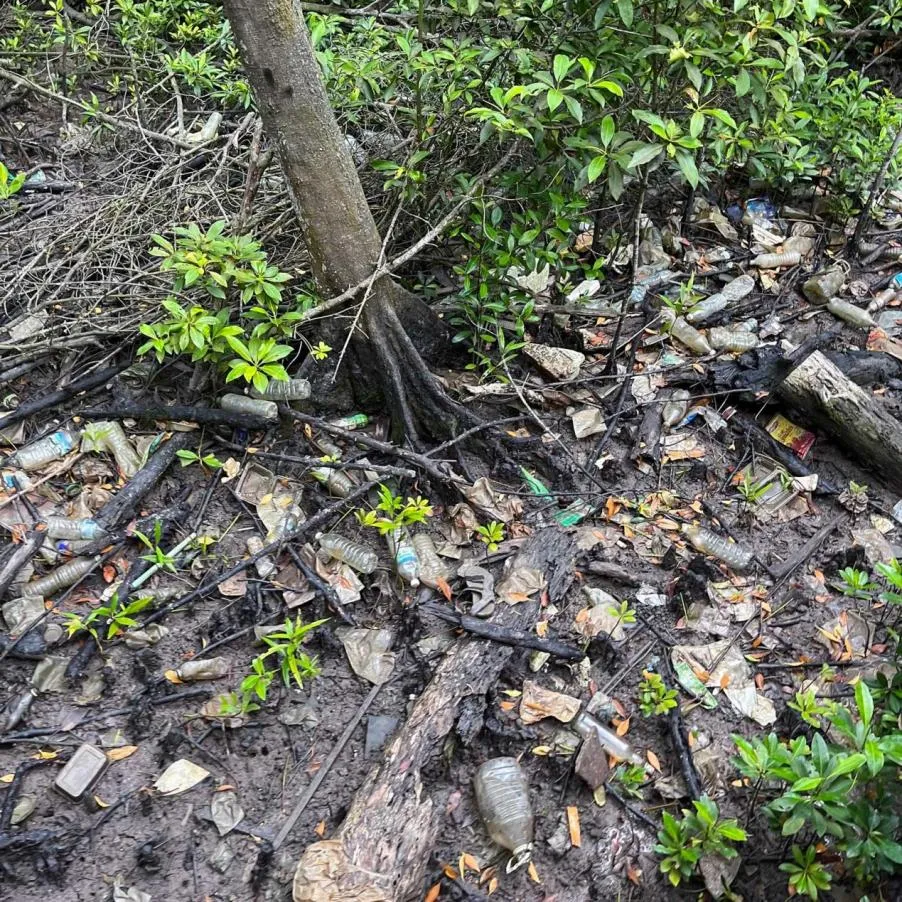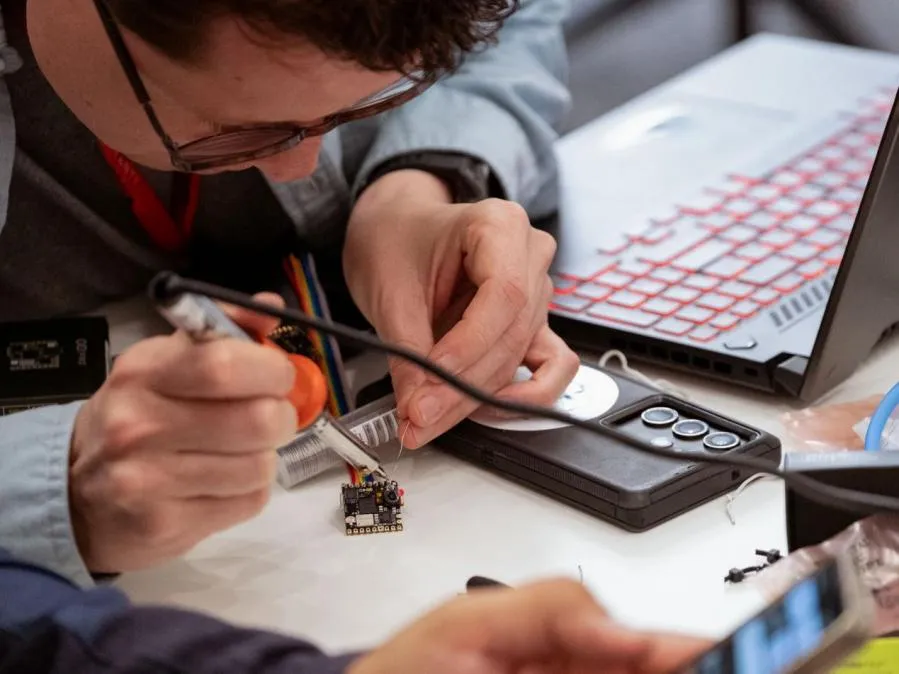
On February 20, 2025, Science published an article titled “What is tinyML? Alternatives to power-hungry and expensive AI in the Global South,” which points out that due to the high power consumption and cost of many AI models, researchers in Global South countries are increasingly adopting low-cost, low-power alternatives. This article shares the main content from Qiyuan Insights for readers’ reference.
1. Background of tinyML’s Emergence
A small drone circles around a cashew tree, its rotor arms extending from its compact body like the legs of a water strider. During its ascent, the drone’s camera captures an aerial view of the leaves, which transition from deep green at the bottom to purple-green at the top. Meanwhile, the AI model embedded in the drone assesses the leaves for disease based on black or brown spots, determining whether they are healthy or not. If necessary, the system could one day guide other drones to individual sick plants to spray pesticides to treat their ailments.
This system is the brainchild of Bala Murugan, a computer scientist at Vellore Institute of Technology in Chennai, India. Murugan comes from a family of cashew farmers. “They use a lot of pesticides on cashews, and I wanted to create a solution to minimize pesticide use,” he said.However, he needed a solution that did not require an internet connection, as internet access is often difficult to achieve in rural India.
Murugan leveraged his technical expertise. During his PhD studies, he researched small, inexpensive processors.Now, he realizes that AI models running on such small devices can help farmers like his family quickly identify and treat cashew diseases. He said, “That’s why I ultimately used tinyML (tiny Machine Learning).”
2. Advantages of tinyML
TinyML (Tiny Machine Learning) models represent a low-cost, low-power implementation of AI that is increasingly being adopted in resource-scarce areas, especially in the Global South. While large language models have become the focus of news due to their versatility and impressive human-like expression skills, tinyML devices currently possess only moderate specialized capabilities. However, they can bring about transformative changes. For example, the drone equipped with a tiny language model developed by Bala Murugan can identify cashew leaves infected with the fungal disease “anthracnose” with an accuracy rate of 95% to 99%. They can save farmers time in searching for signs of disease themselves. Additionally, they can provide targeted treatment for sick plants, avoiding the indiscriminate spraying of pesticides on all plants, which is both costly and harmful to health and the environment.
Murugan is one of many researchers in the Global South looking for applications for tinyML. These devices can serve as low-cost aids for teaching AI skills, but they also provide local solutions to problems that technology companies in the Global North have not adequately addressed, from detecting plant diseases to tracking wildlife. In 2020, approximately 15 million tiny machine learning devices were shipped, and it is estimated that this number will rise to 2.5 billion by 2030.
Part of the appeal for Murugan and others is that once an AI model is trained on a personal computer, it can typically run for weeks on low-power tinyML devices powered by everyday batteries, consuming as much power as a standard laser pointer. These devices do not require an internet connection, which can be scarce in resource-poor areas of the world that wish to adopt AI solutions. Marcelo Jose Rovai, a data scientist at Itajubá Federal University (UNIFEI), said: “Despite their limited functionality, I believe tinyML is the trend of the future. It is fantastic for developing countries.”
Compared to the chips used to run large language models and other AI, tiny machine learning (tinyML) devices are much cheaper and consume significantly less power. Overall, they are small but powerful. Additionally, compared to large models, tinyML models typically use less data, requiring only thousands of images or sounds, while large language models often need millions.

Currently, the microcontroller chips that tinyML models rely on are similar to those found in various devices such as washing machines and car airbags. The chips themselves are inexpensive and can be purchased from several different manufacturers. As a result, most tinyML devices now range in price from a few dollars to several dozen dollars, depending on how powerful their capabilities are. These devices typically include not only chips but also cameras and sensors for detecting images and sounds for AI models to interpret. Most of the software, hardware, and datasets required to get started with tinyML are open-source, meaning researchers can access and modify them freely.
3. Applications of tinyML
(1) Agricultural Applications
In 2020, João Yamashita first encountered tinyML while remotely completing his undergraduate degree. Yamashita is an electronic engineer at UNIFEI, and during the COVID-19 pandemic, he spent time at home in the coffee-growing region of Mogiana Paulista in southeastern Brazil. Yamashita realized that many small farmers were struggling to diagnose diseases in coffee plants. Experts who perform diagnoses are not cheap, and they were not traveling during the pandemic. Yamashita sought possible solutions through tinyML. After training a general AI model using public datasets, he approached farmers to learn about coffee diseases unique to Brazil. He said: At first, they were very skeptical. Many of them didn’t even have mobile phones, so the AI model for automatic disease detection was very novel.
Yamashita took photos of healthy and diseased coffee leaves from rows of coffee plants on the hillside of his hometown to fine-tune the model. He also collected samples and later took photos under more controlled lighting and background conditions. The resulting model can identify various coffee diseases, including fungal diseases (such as downy mildew, sooty mold, and rust) and leaf miners, with an accuracy of 96% to 98%. Farmers can point the device’s camera at a leaf, and the screen will display the name of the disease and a score indicating the model’s confidence. Yamashita said: When I showed (the farmers) how the device worked, they were amazed.

Researchers in Brazil have developed a tiny ML device to detect various diseases on coffee leaves, including rust.
Yamashita said this device is very practical for poor farmers. It does not require internet access, can be used for a week or longer without recharging the battery, and costs less than $20. This is precisely what tinyML excels at: customized, homemade solutions, which explains why agriculture has been a popular application for this technology.
(2) Healthcare Applications
In addition to agriculture, researchers are also developing tinyML devices for healthcare, from detecting atrial fibrillation (an abnormal heart rhythm) in Brazil to anemia in Peru. Multiple research teams are utilizing this technology to distinguish mosquito species by the sound of their wings, eliminating the need to collect mosquitoes with traps or manually identify each one. This allows for quicker alerts and helps control the spread of disease-carrying mosquitoes.
For example, Rovai trained an AI model on a proof-of-concept device to identify two species of Aedes mosquitoes that can transmit dengue, Zika, and chikungunya viruses, achieving an accuracy of 98%. The device’s battery can last for four days in the field. He expects this device to be highly useful in Brazil, where over a million people are infected with dengue each year. In Kenya, similar projects are using tinyML to automatically classify malaria-carrying mosquitoes. Marco Zennaro, a computer scientist at the Abdus Salam International Centre for Theoretical Physics (ICTP), said: Being able to automatically classify mosquitoes is a huge advantage for people working in the field.
(3) Environmental Applications
Similar devices are also entering the environmental application field. In Argentina, researchers have attached tiny machine learning devices to the backs of turtles to track their movements and locations. In Malaysia, engineer Rosdiadee Nordin is using tinyML devices to monitor plastic waste in rivers that may hinder the growth of delicate mangroves. He and a team of volunteers collected 9,000 images of plastic waste to train the AI model until they could classify the waste, distinguishing between groups of plastic bottles and plastic bags. They plan to make this data public to help track the location, quantity, and type of plastic waste. Nordin said: This not only helps (those picking up trash) but also assists local councils or environmental agencies in further planning their waste collection activities.

An AI model running on a tinyML device is helping quickly classify different types of waste that hinder mangrove growth in Malaysia. Hovering over the image highlights the identified objects.
Nordin’s work extends to Tasik Chini Lake in eastern Malaysia, which provides drinking water and fish for local indigenous communities. Nordin deployed solar-powered water quality sensors to detect pollution in the lake and sent the information to tinyML devices, where the AI model uses this information to predict water quality. Nordin said: If we can get the community access to water quality data, they can understand whether the water they drink is safe.
The lake lacks the internet and mobile connections needed to transmit data to researchers. To avoid going to each device and manually downloading data, Nordin had to improvise. He turned to LoRa (a long-range wireless transmission protocol), which consumes relatively little power and bandwidth compared to WiFi and can operate over distances of several kilometers.
Other tinyML researchers are also exploring ways to send data from agricultural tinyML devices to farmers’ computers or mobile phones using the same system. James Adeola, a PhD student in computer science at the University of Abomey Calavi, said: Without a way to remotely download data, farmers have to go through all these devices; it is both time-consuming and tedious. If this solution can be implemented, farmers will be very happy.
4. Development and Challenges of tinyML
Although tinyML devices may seem simple, developing them is a challenge. First, it requires expertise in multiple skills. It combines hardware, software, and machine learning, Basikolo said. Few people can do all of this, so combining all these skills also takes time.
Researchers are trying to spread this expertise by offering tiny machine learning courses and workshops in Morocco, Brazil, Nigeria, South Africa, Rwanda, Malaysia, and other countries in the Global South. For example, in 2021, Harvard University and the Abdus Salam International Centre for Theoretical Physics launched the tinyML Development Academic Network, which now covers 50 academic institutions in the Global South. Organizers, including Zennaro and Harvard computer scientist Vijay Janapa Reddi, first donated tinyML toolkits to partner institutions. Zennaro said: When we launched this initiative, we found that the main issue was how to get hardware into people’s hands, as low-cost hardware in the US may still be expensive elsewhere.

A participant at a workshop in Brazil is working on a tiny ML device for detecting mosquitoes in the field.
In universities in Malaysia, Saudi Arabia, and other countries, students have been trained using these toolkits. In just one or two hours, students can train tinyML devices to recognize words and phrases in local languages, “which is very helpful for the community,” Zennaro said.
Essentially, tinyML’s capabilities are limited. Yamashita said: I think tinyML is very good at solving small problems. The memory and computational power of the microcontrollers running these devices are extremely limited, making them more suitable for highly specific tasks rather than general commercial products. A device may excel at recognizing words in one language or identifying diseases in one plant species, but it is unlikely to become a universal translator or identify diseases in all plants.
However, many technology companies in the Global North, including Apple and Microsoft, are realizing the appeal of running small models directly on devices. For certain applications, such as ordering at McDonald’s, specialized tiny language models that can run on local devices rather than in the cloud may be more cost-effective and power-efficient than running expensive general language models.
Meanwhile, tiny machine learning devices themselves are rapidly becoming more powerful. Peter Ing, an electronic engineer and member of the TinyML Open Education Program, said, just a few years ago, running advanced machine learning models on microcontrollers was considered “absurd.” Warden has already managed to run a simple large language model on a device whose cost and power consumption are only slightly higher than that of tinyML devices. He envisions more large AI models being migrated to these smaller, more energy-efficient devices rather than relying solely on data centers.
At the same time, as microcontrollers continue to become cheaper and more powerful, the simplest tinyML devices may become more common, with some microcontrollers being developed specifically for running AI. Reddi said: It has just reached a maturity point, and what we are seeing now are commercially viable solutions and technologies. He has launched a free online course on tinyML and authored an open-source book on tinyML. Although each tinyML device may be relatively small and specialized, many such devices can communicate with each other to help solve larger, more complex tasks.
Disclaimer: This article is reprinted from Qiyuan Insights. The content of the article reflects the personal views of the original author. This public account translates/reprints it only for sharing and conveying different viewpoints. If there are any objections, please feel free to contact us!
Recommended Reading
Technical Economic Observation | Looking at the establishment of the Efficiency Department of the Government: Development and Impact of the US Government’s External Consulting System
Technical Economic Observation | Review of Trump’s Nuclear Policy and Trends in US Nuclear Policy
Technical Economic Observation | Reaching for the Moon: Competing for New Strategic Heights in Lunar Exploration
Technical Economic Observation | From AlphaFold to mRNA Vaccines: How AI Drives Technological Change in the Field of Proteins
Technical Economic Observation | Changes in the Technology Department during Trump’s Second Term as Seen from Personnel Nominations
Reprinted from | Qiyuan Insights

About the Institute
The International Institute for Technological Economics (IITE) was established in November 1985 and is a non-profit research institution under the Development Research Center of the State Council. Its main functions are to study major policy, strategic, and forward-looking issues in China’s economic and technological social development, track and analyze global technological and economic development trends, and provide decision-making consulting services to the central government and relevant ministries. The “Global Technology Map” is the official WeChat account of the International Institute for Technological Economics, dedicated to delivering cutting-edge technology information and insights into technological innovation to the public.
Address: Building A, No. 20 Xiaonanzhuang, Haidian District, Beijing
Phone: 010-82635522
WeChat: iite_er
